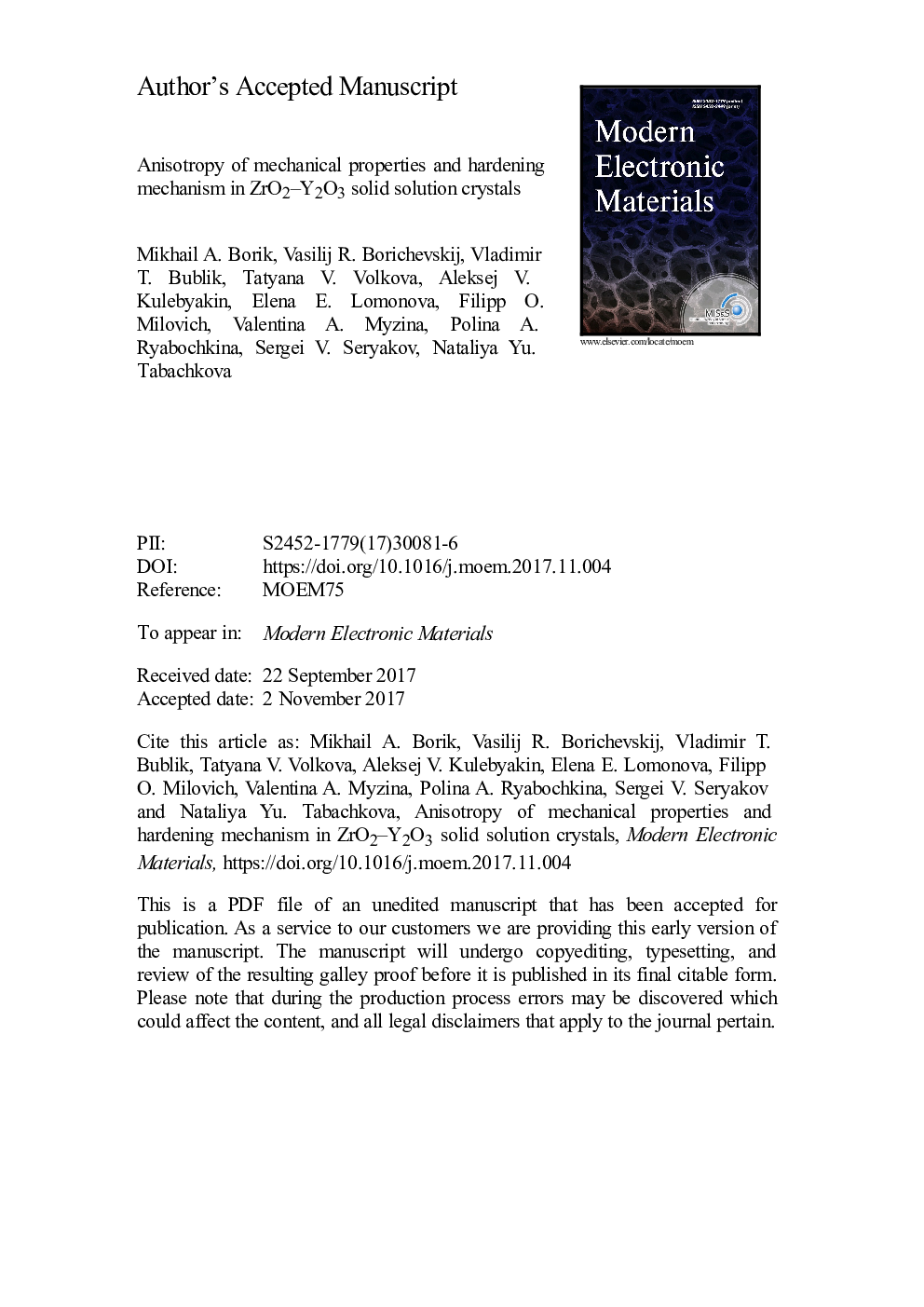| Article ID | Journal | Published Year | Pages | File Type |
|---|---|---|---|---|
| 7924409 | Modern Electronic Materials | 2017 | 22 Pages |
Abstract
The phase composition inside and outside the indents on the {100}, {110} and {111} surfaces for 20, 3 and 1Â N loads has been studied using local Raman spectroscopy. The degree of the tetragonal-monoclinic transition has been assessed for different crystallographic planes and different indenter diagonal orientations. We show that the tetragonal-monoclinic transition is anisotropic, this affecting the transformation hardening mechanism. The maximum amount of the monoclinic phase has been detected in the vicinity of the indent in the {100} plane for the <100> indenter diagonal orientation. The highest fraction toughness has also been observed in {100} plane for the <100> indenter diagonal orientation. Probably, this indenter diagonal orientation provides for the maximum stress orientation along the coherent conjugation planes between the tetragonal and the monoclinic phases during the tetragonal-monoclinic transition, i.e. (100)t || (100)m and [001]t || [010]m.
Related Topics
Physical Sciences and Engineering
Materials Science
Electronic, Optical and Magnetic Materials
Authors
Mikhail Ð. Borik, Vasilij R. Borichevskij, Vladimir T. Bublik, Tatyana V. Volkova, Aleksej V. Kulebyakin, Elena E. Lomonova, Filipp O. Milovich, Valentina A. Myzina, Polina A. Ryabochkina, Sergei V. Seryakov, Nataliya Yu. Tabachkova,
